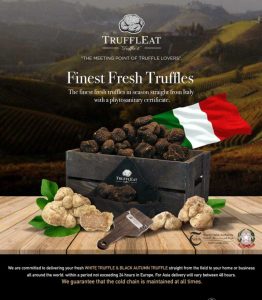2022 was a year that saw retailers in Singapore breathe a sigh of relief as Double 11 was the most extensive shopping event in the country. Similarly, the final shopping event of the year, 12.12, recorded a 56% growth in sales compared to the last year. This spike is likely driven partly by last-minute purchases for the festive season and the looming GST hike coming into effect in 2023.
But 2023 brings new challenges of rising operating costs, changing consumer behaviours in light of global inflation, and an overall cautionary attitude towards discretionary spending.
Consumers, ever so astute, continue to spot shopping opportunities all year to enjoy savings and great deals, particularly during events such as Singles Day and Black Friday. In addition, the continued success of ecommerce proves that consumers have adopted the hybrid purchasing method and shop both in physical stores and online platforms.
The challenge now is for brands and marketers to fully understand their consumers and look at approaches that drive a new conversion level and enhance profitability in the face of an increasingly competitive global. Here are my thoughts on how brands and marketers can improve their mega-sale event strategy to prepare for 2023’s challenges.
Investing in big data and AI to maximise profit
Brands can leverage first-party data to acquire a 360-degree perspective of their current customers, attract new audiences, and address what they want in a purchasing experience. In addition, retailers can use these data to create seamless shopping experiences that enhance buyer-seller relationships.
Nevertheless, in a 2022 survey conducted among consumers in the APAC region, 85% were concerned about how their data is used. However, consumers are more willing to share their information than they think. Through first-party data and advanced first-party solutions powered by AI, consumers are served with relevant ads in real-time through personalisation based on their past behaviour.
Interacting through the whole marketing funnel at every touchpoint allows brands and marketers to interact and engage with consumers transparently, allowing them to gather consumer data in exchange for consumer consent. Simply put – brands that nurture transparency strategies can further establish consumer loyalty and trust, which can assist in sales in the long run. Through this, brands and marketers today will diversify their revenue streams while delivering the exceptional customer service and added value consumers have come to expect from their brands.
Product discovery to convergence; a complete funnel approach
Southeast Asian consumers are not afraid to switch brands to suit their lifestyles better. As a result, brands and marketers can use last-minute possibilities to engage their audience and optimise sale convergence. To do this, brands and marketers must understand how shoppers start shopping.
From how consumers discover, compare, and assess products to checkout and delivery, enabling greater reach at every touch point wherever they are in their shopping journey. Consumers looking for the best deals for products they have already decided to buy more likely to visit brand websites and apps as their first port of call.
To help them make their final purchase decision – consumers use product reviews to assist them in making their decision, with 3 out of 4 Singapore shoppers confirming that they have referred a brand to someone based on a good experience they had.
Additionally, shoppers have expressed interest in immersive shopping experiences primarily via streaming services due to accessibility on their internet-enabled devices. Most Singapore consumers confirmed owning and actively using at least 3 internet-enabled devices every week, allowing more time on streaming services.
Seamless shopping experience across purchasing channels
Consumers don’t only shop on one platform and method but from a variety, such as e-commerce websites and applications, official brand websites, and physical stores, especially during mega sale events, for their appeal. For instance, consumers still like to visit stores to browse the product before purchasing to enjoy immediate gratification, with four out of five Singapore consumers – browsing online and subsequently purchasing in stores.
While unbeatable pricing during a mega sale holds weight amongst shoppers, especially during inflation, price is not the only draw for consumers. What they’re looking for is securing the best deal possible. During a sales event like Black Friday, consumers are more likely to repurchase brands that provide a positive purchasing experience (41% in 2022 vs. 34% in 2021) and good customer service (39% in 2022 vs. 35% in 2021).
Thus, we see consumers adopt a hybrid path of purchasing methods that is most likely to stay. In other words, shoppers want the best of both worlds—a streamlined online experience to complement the in-store experience. As shoppers return in-person to brick-and-mortar shops, they still rely on retailer websites and mobile apps to supplement and streamline their experience.
For this reason, brands and marketers need to address hybrid shopping channels and create an omnichannel retail presence throughout the shopping journey to effectively reach consumers on the numerous platforms and methods they utilise to make their purchases. By making sure consumers know what’s available in-store—and what they’ll be spending—ahead of time, brands can provide consumers with a seamless shopping experience that, in return, builds loyalty and trust.
Taranjeet Singh is the managing director for Southeast Asia and India at Criteo


